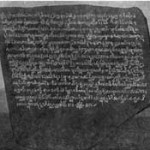The 20.62 square kilometres (2,062 hectares) region of Muarajambi spreads across 7.5 kilometres along the Batanghari riverside.

A few temples buildings have been identified and a handful have been restored, including Candi Gedong I (65 m x 85 m), Candi Gedong II (76 m x 67.5 m), Candi Kembarbatu, Candi Kotamahligai (estimated 113.60 m x 95.60 m), Candi Gumpung (150 m x 155 m), Candi Kedaton (215 m x 250 m), Candi Tinggi, Candi Tinggi I, Candi Astano, Candi Sialang, Candi Teluk I , Candi Teluk II and Bukit Perak.

An estimated 80 ‘menapo’ (mounds of ruins) are still left unrestored. In addition, there are also several ponds, with Telagorajo pond being one of the biggest.
Muarajambi Region – Indonesia’s Oldest and Longest Centre of Education

While there are numerous literatures on explorations of Srivijaya, most of them refer to Srivijaya as a kingdom, as a centre of trade, and are more focused on its social-political life. However, archelogical indications, epigraphical evidences and various notes from travellers indicate that Srivijaya was also a main centre of education. In that case, where is the said education centre? What can we bring to light from the greatness of this legacy?
 Bahasa
Bahasa
 October 24th, 2010
October 24th, 2010  SUDIMUJA
SUDIMUJA 
